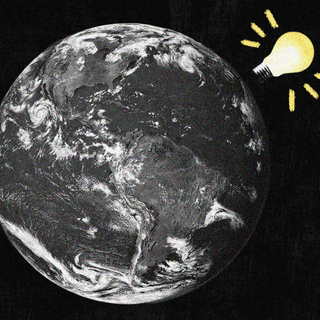The last 48 hours have witnessed an unflinching shift in our realities. On Thursday, Russia invaded parts of Ukraine by land, air, and sea — becoming the first instance since World War II of a European country attacking another. Then, news came of Russia capturing the Chernobyl nuclear power plant — the site of the infamous and devastating nuclear disaster in 1986. Experts believe fighting around the cordoned zone could potentially disturb the nuclear waste and spread dangerous radioactive material across European regions.
“If as a result of the occupiers’ artillery strikes the nuclear waste storage facility is destroyed, the radioactive dust may cover the territories of Ukraine, Belarus, and the EU [European Union] countries!” an unnamed advisor to the Ukrainian interior ministry said.
On Thursday, videos on social media presented a grim picture: tanks were parked on a road that runs around the Chernobyl facilities, with explosions heard in the background. Even a Russian source confirmed that Russian troops passed into the Chernobyl “exclusion zone.”
“After the absolutely senseless attack of the Russians in this direction, it is impossible to say that the Chernobyl nuclear power plant is safe,” an advisor to the Ukrainian government, Mykhailo Podolyak, told Reuters. “This is one of the most serious threats in Europe today.”
Ukraine’s Chernobyl is a site of historic tragedy and intangible grief. It was the scene of the world’s worst nuclear explosion back in 1986 when a botched safety test in the fourth reactor of the atomic plant sent clouds of nuclear material across large swathes of Europe. It is now one of the most radioactive places in the world — deemed uninhabitable by humans for the next 24,000 years.
Related on The Swaddle:
Forest Fires Are Raging Dangerously Close To Chernobyl’s Nuclear Site
“In 1986, the world saw the biggest technological disaster in Chernobyl. If Russia continues the war, Chernobyl can happen again in 2022,” the country’s foreign ministry tweeted.
The humanitarian cost of Chernobyl, previous wars, or the current crisis defies description; immense loss, grief, and suffering remain as history is revised and the sin of imperialism reigns supreme. The ecological consequences of the crises are also telling of the toll; the scars the Chernobyl disaster left on neighboring areas are still visible as one-tenth of the land area was affected by the radiation. “Even today, Ukraine releases polluted water, heavy metals, organic compounds, and oil-related pollutants into the Black Sea,” a report noted.
Moreover, with tests confirming the nuclear waste around Chernobyl not decaying as quickly as predicted, experts believe the environment is at risk for at least 180 years — “the time required for half the cesium to be eliminated from the affected areas by weathering and migration. Other radionuclides will perhaps remain in the region forever,” TIME noted.
Any fighting and attacks around the area, then, could trigger a catastrophic ecological crisis. “Following the situation in Ukraine with grave concern and is appealing for maximum restraint to avoid any action that may put the country’s nuclear facilities at risk,” said Rafael Mariano Grossi, director general of the International Atomic Energy Agency, in a statement.
As of now, Ukraine has recorded more than 200 civilian deaths, with the actual count grievously unknown. The shadow of a looming war stands to haunt people across space and time. “Our defenders are giving their lives so that the tragedy of 1986 will not be repeated,” Ukrainian President Volodymyr Zelensky said on Twitter. “This is a declaration of war against the whole of Europe.”




